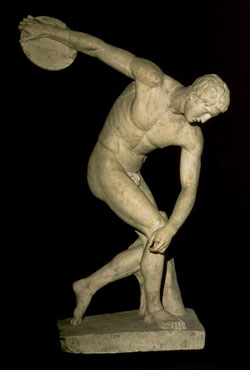Home » Course Layouts » Free Course Layout Udemy
This course, The body in antiquity, will introduce you to the concept of the body in Greek and Roman civilization. In recent years, the body has become a steadily growing field in historical scholarship, and Classical Studies is no exception. It is an aspect of the ancient world that can be explored through a whole host of different types of evidence: art, literature and archaeological artifacts to name but a few. The way that people fulfill their basic bodily needs and engage in their daily activities is embedded in the social world around them. The body is a subject that can reveal fascinating aspects of both Greek and Roman culture it will help you to better understand the diversity of ancient civilization.
0
58
English
English [CC]
- Learn basic syntax that can apply to any language.
- Learn what is a programming language and the basic concepts for beginners.
- Understand what is Javascript in it's truest form.
- Know the basic syntax of Javascript.
- Know some hidden quirks in Javascript.
Description
Introduction
This course will introduce you to the concept of the body in Greek and Roman civilization. In recent years, the body has become a steadily growing field in historical scholarship, and classical studies is no exception. It is an aspect of the ancient world that can be explored through a whole host of different types of evidence: art, literature and archaeological artefacts to name but a few. The way that people fulfill their basic bodily needs and engage in their daily activities is embedded in the social world around them. The body is a subject that can reveal fascinating aspects of both Greek and Roman culture – it will help you to better understand the diversity of ancient civilization.
His lower body faces to the viewer’s right. His muscled upper body is twisted towards the viewer as he bends forward and turns to look down to the floor in front of his right foot. His expression is one of concentration.
His weight rests firmly on his bent right leg and his foot turns outward. His left leg is bent behind him. His arched foot is vertical and his toes curl under as they meet the floor. His right arm extends high behind him. His forearm, palm and thumb press against the discus and he grips the far edge of it firmly with his fingers. His left arm hangs loosely, resting gently on the outside of his opposing right knee. The angle of his arms mirror each other and form an arc around his upper body.Learning outcomes
After studying this course, you should be able to:- Understand what makes the study of the ancient body important for our understanding of ancient society
- Understand the meaning and significance of key theoretical approaches to bodies (‘habitus’, ‘cultural scripts’)
- Understand the central role of specific cultural circumstances in the way human societies view and treat the body
- Display knowledge of some diverging ancient and modern approaches to the body.
Course content
-
- Why the Body? 00:55:00
-
- ‘Habitus’ 00:55:00
- ‘Cultural scripts’ 00:55:00
- Keeping Body and Soul Together 00:55:00
N.A
- 5 stars0
- 4 stars0
- 3 stars0
- 2 stars0
- 1 stars0
No Reviews found for this course.










